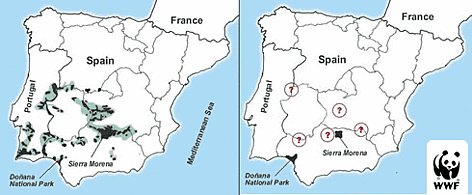
In this exploration, we’ll dive deep into the Iberian lynx’s living spaces, how they’ve adapted to their environment, and the impact of human activity on their habitat. So, grab your coffee, and let’s wander through the dense forests and scrublands of the Iberian Peninsula together!
The Iberian Lynx: A Quick Overview
Before we delve into its habitat, let’s take a moment to understand the Iberian lynx itself. As one of the most endangered cats in the world, the Iberian lynx has seen its population dwindle dramatically over the years. Once ranging widely across Europe, these cats are now confined to specific areas.
They thrive in open areas that are rich in vegetation. Think of landscapes filled with dense shrubs and low trees. These environments provide the perfect cover for hunting and nesting. The Iberian lynx primarily feeds on rabbits, so areas with plenty of these furry critters are a must. Their reliance on specific food sources makes understanding their habitat all the more critical.
Natural Habitat of the Iberian Lynx
Iberian lynxes primarily inhabit the scrublands and open woodlands of the Iberian Peninsula. More specifically, they favor places like Mediterranean forests and grasslands, where they can move stealthily and find plenty of food. Here, they can be spotted lounging under the shade of trees or prowling through dense bushes in search of their next meal.
The lynx’s habitats are typically characterized by:
- Thick undergrowth that offers cover
- Open spaces for hunting
- Proximity to water sources
- Areas rich in rabbit populations
These characteristics are crucial. The Iberian lynx is not just any cat; it needs a specific type of environment to thrive. Each part of its habitat plays a role in its survival, from finding shelter from predators to hunting effectively.
Current Distribution of the Iberian Lynx
Today, the Iberian lynx is primarily found in two key regions in Spain: Andalusia and Extremadura. Here’s the thing: these areas are home to some of the last remaining populations of this magnificent cat. The largest population can be found in the Sierra de Andújar and Doñana National Park.
In Portugal, their presence is more scarce, yet they can sometimes be spotted in the Alentejo region. Unfortunately, due to habitat loss and hunting, their numbers have dropped significantly, making conservation efforts more crucial than ever.
The Iberian lynx used to roam much larger areas but has shrunk dramatically over the years. This change in distribution is a reminder of how fragile wildlife can be in the face of human expansion and environmental changes.
Factors Affecting Iberian Lynx Habitat
Several factors play a role in the habitat and distribution of the Iberian lynx. Understanding these factors helps illuminate the challenges they face.
1. Habitat Loss: Urban development and agricultural expansion have resulted in significant habitat destruction. As forests turn into farms or cities, the space where these lynxes can hunt and live shrinks.
2. Food Supply: The Iberian lynx is heavily dependent on rabbits. With the decline of rabbit populations due to disease and habitat destruction, the lynxes face food shortages.
3. Human Interaction: Roads and traffic pose a threat to these cats. Collisions with vehicles are a leading cause of death for Iberian lynxes.
4. Conservation Efforts: Thankfully, dedicated conservation projects are underway. These initiatives aim to restore and protect the lynx’s habitat, increase rabbit populations, and reduce human-wildlife conflict.
These factors highlight just how complex the relationship between wildlife and their environment can be. Each element can tip the balance of survival for the Iberian lynx.
Conservation Status and Efforts
The Iberian lynx is classified as critically endangered by the IUCN. Conservationists have recognized the dire need to protect this species and its habitat. Fortunately, some programs are making strides.
Organizations have focused their efforts on:
- Habitat restoration: Replanting vegetation and creating safe corridors for lynxes to travel.
- Rabbit population management: Ensuring a stable food supply through breeding programs.
- Public awareness campaigns: Educating locals about the importance of the lynx in the ecosystem.
Each of these efforts plays a crucial role in ensuring the Iberian lynx’s survival. The good news is that conservation successes have led to a slow increase in their population over recent years. This progress shows that with enough dedication and care, we can make a difference.
Future of the Iberian Lynx
Looking ahead, the future of the Iberian lynx is intertwined with conservation success. While their numbers are increasing, challenges remain. The impact of climate change and ongoing habitat loss could threaten their future once again.
To give the Iberian lynx the best chance for survival, continued efforts in habitat protection, public awareness, and scientific research are essential. It’s also vital for local communities to engage in conservation efforts actively. When people understand and care about their local wildlife, it fosters a sense of responsibility and stewardship.
In conclusion, the Iberian lynx is a unique and fascinating creature that plays a vital role in its ecosystem. By understanding where they live and the challenges they face, we can help protect these magnificent cats for generations to come. Their survival is not just about protecting a species; it’s about maintaining the rich tapestry of life that makes up our planet. So, let’s continue to support efforts that ensure the Iberian lynx and its habitat are preserved for future generations to admire and enjoy!
